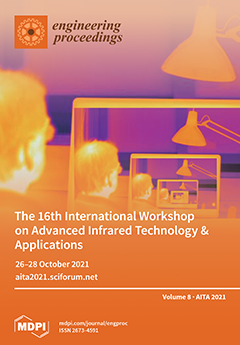Open AccessProceeding Paper
SISSI Project: A Feasibility Study for a Super Resolved Compressive Sensing Multispectral Imager in the Medium Infrared
by
Cinzia Lastri, Gabriele Amato, Massimo Baldi, Tiziano Bianchi, Maria Fabrizia Buongiorno, Chiara Corti, Francesco Corti, Marco Corti, Enrico Franci, Donatella Guzzi, Enrico Magli, Vanni Nardino, Lorenzo Palombi, Vito Romaniello, Tiziana Scopa, Mario Siciliani De Cumis, Malvina Silvestri, Diego Valsesia and Valentina Raimondi
Cited by 2 | Viewed by 1109
Abstract
This paper describes the activities related to a feasibility study for an Earth observation optical payload, operating in the medium infrared, based on super-resolution and compressive sensing techniques. The presented activities are running in the framework of the ASI project SISSI, aiming to
[...] Read more.
This paper describes the activities related to a feasibility study for an Earth observation optical payload, operating in the medium infrared, based on super-resolution and compressive sensing techniques. The presented activities are running in the framework of the ASI project SISSI, aiming to improve ground spatial resolution and mitigate saturation/blooming effects. The core of the payload is a spatial light modulator (SLM): a bidimensional array of micromirrors electronically actuated. Thanks to compressive sensing approach, the proposed payload eliminates the compression board, saving mass, memory and energy consumption.
Full article
►▼
Show Figures




